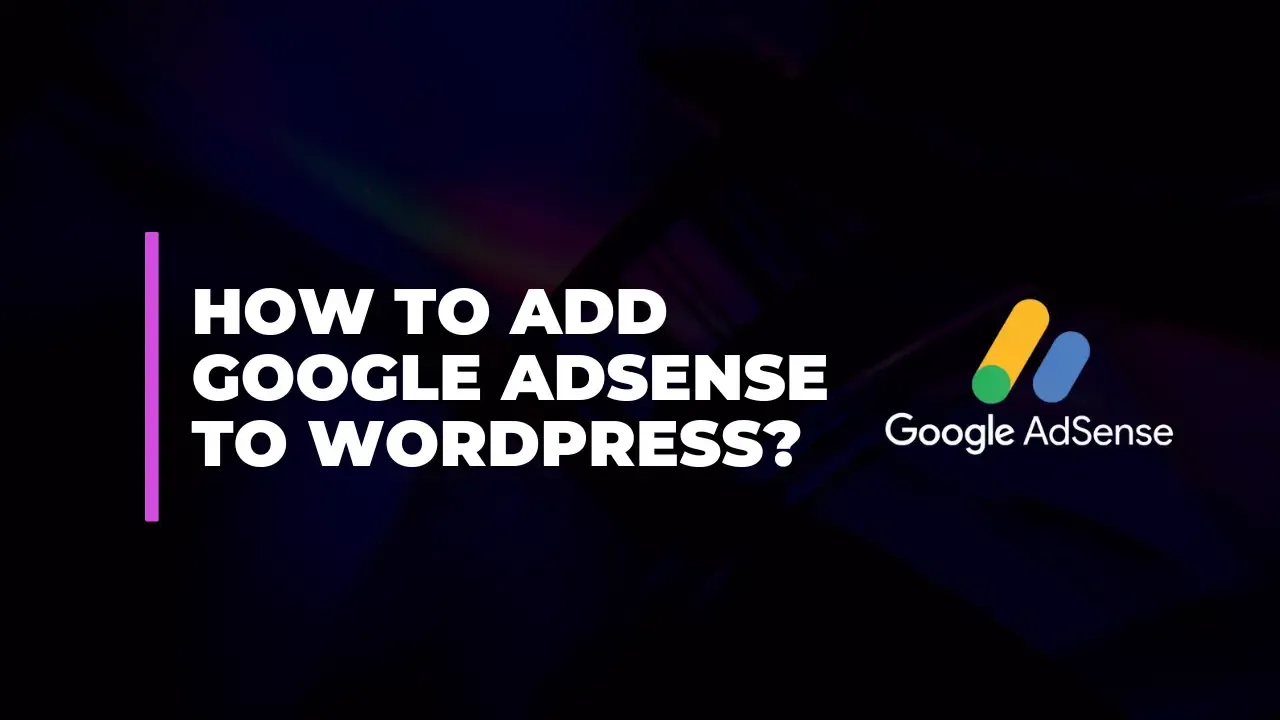How to Add Google AdSense to WordPress?

Monetizing your WordPress site with Google AdSense can be a fantastic way to earn revenue from your content. Whether you’re running a blog, news site, or niche website, this step-by-step guide will help you seamlessly integrate AdSense into your WordPress site. Let’s dive into the details!
1. Sign Up for Google AdSense
1.1 Create a Google AdSense Account
To start earning with AdSense, you need to create an account. Follow these steps:
Visit Google AdSense:
Go to Google AdSense.
Click on Get Started and sign in with your Google account.
Complete the Application Form:
Enter your website’s URL and choose your preferred language.
Fill out your contact information. Make sure this information is accurate, as it will be used for payment and communication.
Agree to the Terms:
Review Google’s AdSense policies and terms of service, and then agree to them.
Submit Your Application:
Click Create Account and follow the instructions. Google will review your application, which may take a few days to a few weeks.
1.2 Verify Your Site
Confirmation Email:
Once approved, Google will send you a confirmation email. Follow the instructions in the email to verify your site.
Add AdSense Code:
Google will provide you with a verification code. Place this code on your site to confirm ownership and enable AdSense ads.
2. Get Your AdSense Code
2.1 Log in to Your AdSense Account
Access Ad Units:
Log in to your AdSense account and navigate to the Ads section on the left sidebar.
Create a New Ad Unit:
Click By ad unit to start creating a new ad.
2.2 Choose and Customize Your Ad
Select Ad Type:
Display Ads: Responsive ads that adjust to different devices.
In-feed Ads: Ads that appear within your content feed.
In-article Ads: Ads placed within the content of your articles.
Matched Content: Suggests related content alongside ads (only available for some accounts).
Customize the Ad:
Adjust the size, style, and format of your ad to fit your site’s design.
Generate and Copy Code:
Click Save and Get Code. Copy the code snippet provided; this will be used to place ads on your site.
3. Add AdSense Code to Your WordPress Site
You have a couple of options for adding AdSense code to your WordPress site: using a plugin or adding code manually.
3.1 Using a Plugin
Ad Inserter Plugin:
Install and Activate Ad Inserter:
Go to Plugins > Add New in your WordPress dashboard.
Search for “Ad Inserter,” click Install Now, and then Activate.
Configure Ad Inserter:
Go to Settings > Ad Inserter.
Paste your AdSense code into one of the available blocks.
Configure the placement settings (e.g., before or after posts, in the middle of content, etc.).
Save your settings.
Advanced Ads Plugin:
Install and Activate Advanced Ads:
Go to Plugins > Add New.
Search for “Advanced Ads,” click Install Now, and then Activate.
Configure Advanced Ads:
Go to Advanced Ads > Ads.
Click Add New Ad, paste your AdSense code, and configure ad placement settings.
Save and publish the ad.
3.2 Adding Code Manually
Use Widgets:
Go to Widgets:
Navigate to Appearance > Widgets.
Add a Custom HTML Widget:
Drag a Custom HTML widget to your desired widget area (e.g., sidebar, footer).
Paste the AdSense code into the widget’s content area and click Save.
Edit Theme Files (Advanced):
Access Theme Editor:
Go to Appearance > Theme Editor.
Select a File:
Choose a file where you want the ad to appear, such as header.php, footer.php, or single.php.
Insert Ad Code:
Paste the AdSense code in the desired location within the file and click Update File.
Note: Directly editing theme files can be risky. Always back up your site before making changes.
4. Verify AdSense Implementation
4.1 Check Ad Display
Visit Your Site:
Browse your site to ensure ads are displaying where you’ve placed them.
Use Browser Tools:
Inspect the page using browser developer tools to confirm that the AdSense code is being loaded.
4.2 Monitor Performance
AdSense Dashboard:
Regularly check your AdSense account for performance reports and earnings.
Analyze Ad Placement:
Use tools like Google Analytics to monitor how ad placement affects user behavior and revenue.
5. Optimize Ad Placement
5.1 Experiment with Formats
A/B Testing:
Experiment with different ad formats and placements to find what works best for your site and audience.
Responsive Ads:
Use responsive ads to ensure they display well on both desktop and mobile devices.
5.2 Monitor and Adjust
Review Performance:
Regularly review ad performance metrics and make adjustments based on what you find.
Optimize Revenue:
Adjust ad styles, sizes, and placements to maximize revenue while maintaining a good user experience.
Conclusion
Adding Google AdSense to your WordPress site is a powerful way to monetize your content and generate revenue. By following this comprehensive guide, you can successfully integrate AdSense, customize ad placements, and optimize performance for the best results. Remember to adhere to AdSense policies to keep your account in good standing and continually monitor your ad performance to maximize your earnings.
